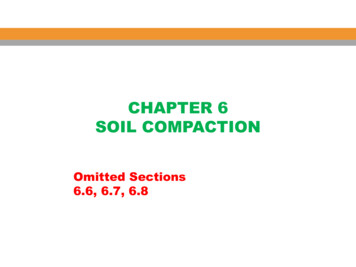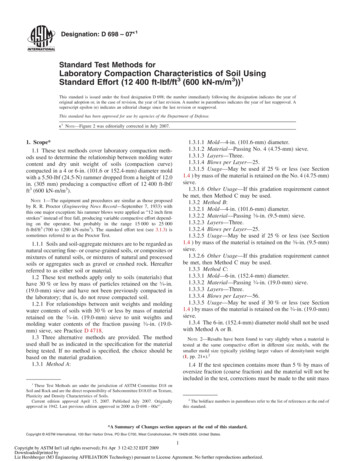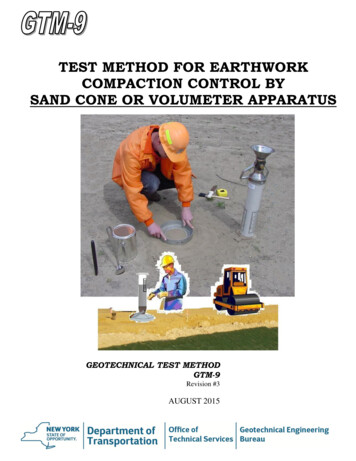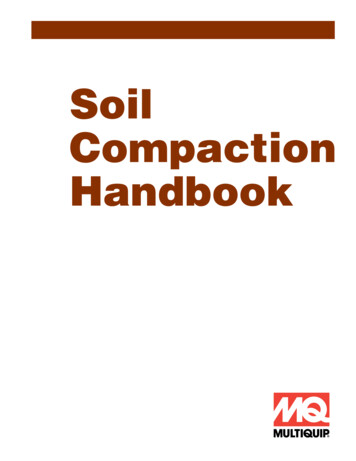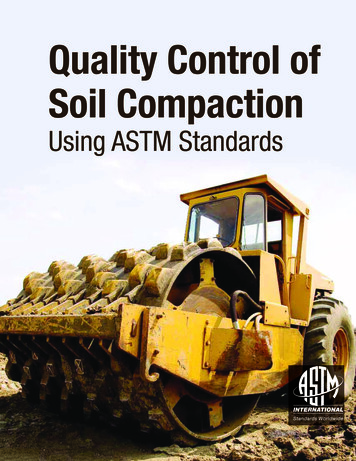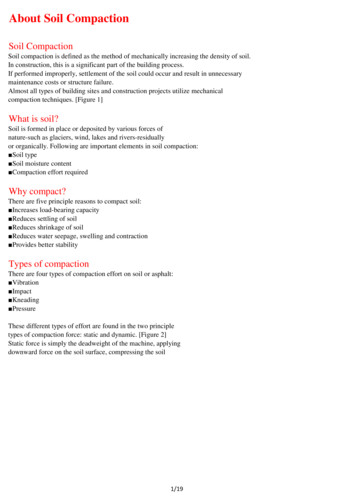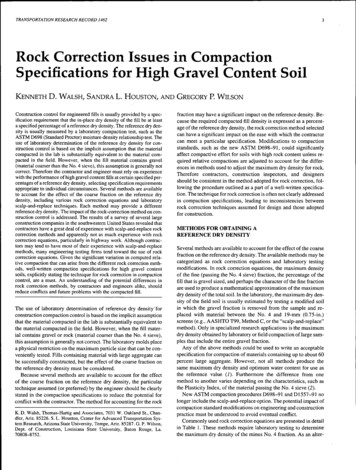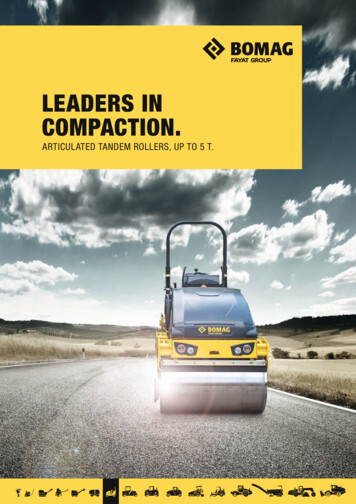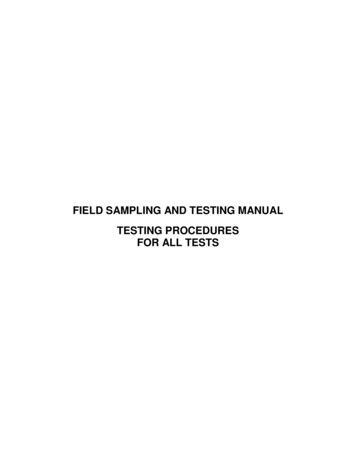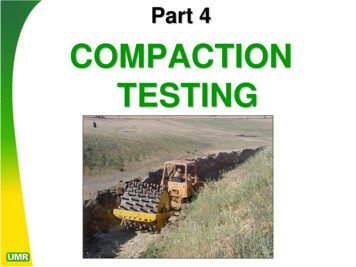
Transcription
Part 4COMPACTIONTESTING
Runway Repairs Procedures weredeveloped during theSecond World War torun density tests ingranular mixtures, andspecify repairs and spotpatches. Thesepictures are from IwoJima in July 1945
coincide with 85% saturationWhich Test AreYou Using?Modified Proctor 56,250 ft-lbs/ft3California Test 216-F 37,000 to 44,000 ft-lbs/ft3Standard Proctor 12,400 ft-lbs/ft3The most importantfigure in this lecture Compaction tests results vary with the inputcompactive effort, usually measured in foot-poundsper cubic foot of soil.The line of optimum moisture contents is usuallyaround 85% saturation and the optimum moisturecontent decreases with increasing compactive effort.
The Standard Proctor test (ASTM D698) employs 12,400ft-lbs/ft3 of soil, while the Modified Proctor (ASTMD1557) uses 56,250 ft-lbs/ft3. This typically leads tovariances between 8% and 11%, as shown above.
8%differencein clayeysand 10%difference insiltComparisons between Modified Proctor, Standard Proctor, 15-blowProctor, and Porter static compaction tests on samples of silt andclayey sand by the Army Corps of Engineers in 1945.
SPECTURM OF CURVES The maximum achievable density depends onthe type of material, as well as the input energyduring compaction. It is commonly used fordiatomaceous earth and halyositic clays.
Average maximum dry unit weight and optimum moisturecontent achieved by standard Proctor Tests (ASTM D698) withplastic limit (PL) and liquid limit (LL). This is a key figure toconsult when compacting expansive clay soils. Taken from“Factors Influencing Compaction” (1962), HRB Report 319.
Curve Fitting and SpeedyMoisture MetersThe Speedy MoistureMeter is a portablesystem comprising avessel with an integralpressure gauge aweighing scale in aportable case. Family of expected wetdensity compactioncurves, based on 18,000compaction testscompiled by the OhioDOTA small sample of the material isprepared, weighed andplaced into the vessel. The reagent isthen added and the vessel is sealed andshaken to mix the reagent with thesample.
Compaction curves should be prepared for all types of soil inthe project area, before earthwork commences. If differentsoils are mixed, then “check points” should be calculated toascertain the optimum moisture level for the soil mixturebeing placed and tested. A great deal of judgment isrequired when performing such work.
Most field compaction tests are now made using nuclear densitygages that employ a cesium element.Nuc gages can have significant errors if the extendable probe islocated next to a rock 3 inches across. In rocky fills the operatorshould always rotate the probe 90 degrees and take a secondreading, recoding the lower of the two values.
The Standard Proctor test (ASTM D698) employs 12,400 ft-lbs/ft. 3. of soil, while the Modified Proctor (ASTM D1557) uses 56,250 ft-lbs/ft. 3. This typically leads to variances between 8% and 11%, as shown above. Comparisons between Modified Proctor, Standard Proctor, 15 -blow Proctor, and Porter static compaction tests on samples of silt and clayey sand by the Army Corps of Engineers in 1945 .
